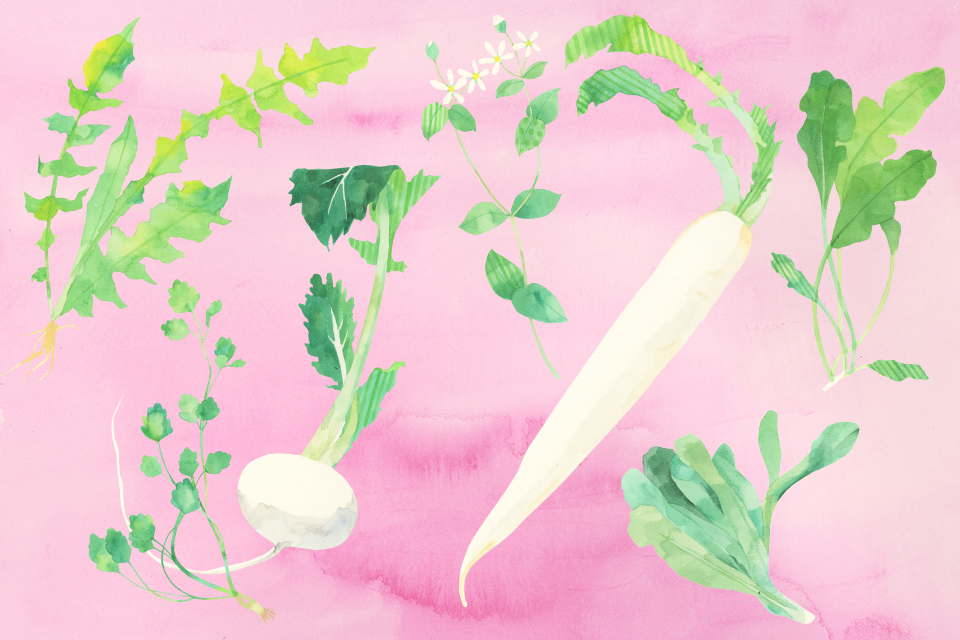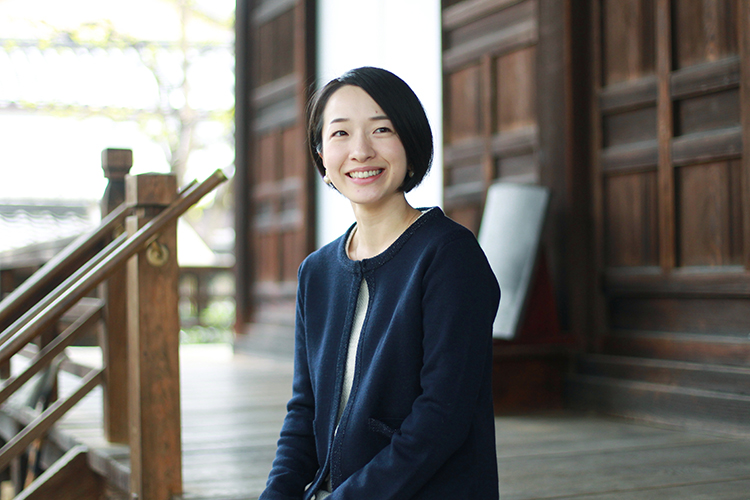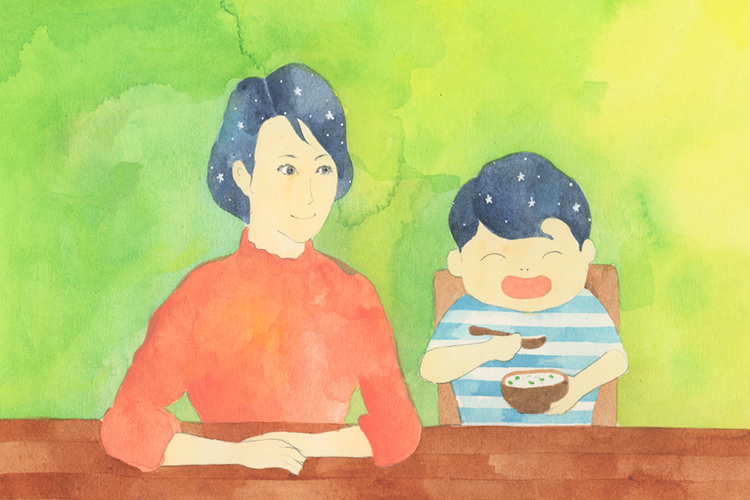Nanakusa Porridge: A Timeless Japanese Tradition
Dec 23,2021
Nanakusa Porridge: A Timeless Japanese Tradition
Dec 23,2021


In Japan, you’ll notice that seven types of herbs appear on grocery store shelves as January 7 approaches. These are called the Seven Spring Herbs, and it’s customary to serve them in rice porridge on that day. The seven herbs are: seri (Japanese parsley), nazuna (shepherd’s purse), gogyo (cudweed), hakobera (chickweed), hotokenoza (henbit), suzuna (turnip), and suzushiro (another name for daikon). When did the custom of eating rice porridge made with seven herbs begin? We asked food culture expert Kiyoshi Aya.
January 7, the day on which seven-herb rice porridge is customarily eaten, marks the Jinjitsu Festival, one of the traditional five seasonal festivals. These take place on the seventh of the first month, the third of the third month (the Doll Festival), the fifth of the fifth month (the Boy’s Festival), the seventh of the seventh month, and the ninth of the ninth month. The five seasonal festivals originated in ancient China, where dates that repeated the same odd number, such as the third of the third month or the fifth of the fifth month, were considered inauspicious. Ceremonies were therefore held on those dates to ward off evil spirits.
Then why is the first seasonal festival of the year held not on the first of the first month but on the seventh? And why is seven-herb rice porridge eaten on that day? Therein lies a tale.

Food culture expert Kiyoshi Aya
“Sources from the Muromachi period (1336-1573) indicate that New Year’s Day, the first day of the first month, was counted among the five seasonal festivals rather than the Jinjitsu Festival, the seventh day of the first month. In the Edo period (1603-1867), though, the Jinjitsu Festival replaced New Year’s Day on the list of seasonal festivals celebrated annually by the shogunate. This, they say, is because New Year’s celebrations were already widely held on the first day of the first month. But there were other reasons as well.
In ancient China, auspices were taken on each of the first eight days of the year: for chickens on the first day of the first month, for dogs on the second, for sheep on the third, and so on for pigs, cows, horses, people, and rice. The seventh day was thus set aside for telling human fortunes; hence it was called ‘Human Day’ or Renri, in Japanese pronounced Jinjitsu. It was customary to eat soup made with seven types of greens on that day in hopes of good health.
Along with this Chinese custom, there was a separate tradition observed in Heian-period (794-1185) Japan on the seventh day of the first month. This was a feast called the Festival of the Seventh Day. Around the same time, it was also customary to pick young greens, then eat them while praying for good health.
In both China and Japan, people would exorcise evil spirits and pray for good health as the cold winter weather gave way to spring. The Japanese custom of celebrating the Jinjitsu festival arose from the fusion of imported Chinese customs with native Japanese traditions.”
This custom started out as a rite observed by the court nobility, but over time it spread to the common people. During the Edo period, it became a popular celebration recognized as one of the five seasonal festivals.

Picking young greens. Illustration from Yamato kosaku esho. Source: National Diet Library Digital Collections.

It’s not known when the soup containing seven types of greens eaten in China evolved into the seven-herb rice porridge familiar in Japan. At any rate, evidence survives to show that the Japanese have made ritual use of the seven herbs as culinary ingredients since olden times.
“A source from the end of the Kamakura period (1185-1333), for instance, describes eating soup made with seven types of herbs on the seventh to expel evil spirits. Another Kamakura-period source describes nobles ‘beating’ young greens while chanting magical incantations. ‘Beating’ here means chopping into fine pieces with a knife in each hand. They would chop the greens continuously from the night of the sixth till the morning of the seventh while praying for deliverance from evil spirits, so the greens must have been reduced to a paste by the morning. At some point, the custom became simplified, and people would chop the herbs on the evening of the sixth and the morning of the seventh, then eat them in rice porridge.”
Another text, Tokugawa seiseiroku, an account of the rituals of the Edo shogunate published in 1889, includes a description someone dressed in a short-sleeved kimono chopping the seven herbs while facing in an auspicious direction.
“The magical incantation opens with the words,
Nazuna, one of the seven herbs.
Before the bird of China
Flies over to Japan…
These verses express the desire to drive away the ill-omened bird symbolizing disease and misfortune, which tend to strike at the changing of the seasons. The custom of chanting such verses while preparing the seven herbs still survives in parts of Japan.”

Celebrating the Jinjitsu festival during the Edo period. Illustration from Edo funai ehon fuzoku orai (1905). Source: National Diet Library Digital Collections.

So when did the present list of seven herbs come into being?
“A source dating to 1446, in the mid-Muromachi period, gives the seven herbs as seri, nazuna, gogyo, tabirako, hotokenoza, ashina, and miminashi. Three of the herbs in this list—tabirako, ashina, and miminashi—differ from those familiar today. The current list appears much later in an almanac published in 1688 titled Nihon saijiki. ‘The seven herbs,’ it states, ‘are seri, nazuna, gogyo, hakobera, hotokenoza, suzuna, and suzushiro.’ By the first half of the Edo period, the seven herbs appear to have been well known to the common people.”
But unlike today, getting a hold of all seven herbs was almost impossible.
“A text from 1867 states that seven-herb rice porridge was eaten in the three major urban centers (Edo, Kyoto, and Osaka) on the seventh of the first month. But not all seven herbs were available, so the common people only put one or two in their porridge. For example, in Kyoto and Osaka, the text records, kabuna (turnip) was added to nazuna to make the porridge. In Edo, komatsuna (Japanese mustard spinach) was added. Another passage records that vendors who sold nazuna gathered in the wild would appear when the season of the seven herbs arrived. Japanese in those days were eager to eat seven-herb rice porridge in hopes of good health, but they enjoyed it with whatever greens were at hand.”
Even greater variety was to be observed in other parts of Japan. Herbs could be difficult to find at this season of the year, particularly in cold regions, and people got creative. Aya elaborates.
“There’s a survey describing the mores and customs of different regions of Japan in the late Edo period, and among the questions asked was, ‘What do you put in seven-herb rice porridge?’ One answer from Fukushima Prefecture, the text records, was ‘nazuna, turnip, hondawara, tsunomata, kelp, and dried persimmon.’ Hondawara and tsunomata are, like kelp, both types of seaweed. Seaweed keeps well when dried, and dried persimmons were offered at the altar at New Year’s, so the locals evidently put them in their rice porridge in place of the standard seven herbs.
In Aichi Prefecture, according to the survey, only nazuna and suzuna were put in the porridge. The text continues, ‘Few families add seri. And only an eccentric would put in all seven herbs.’ That gives you a glimpse of what ordinary people back then actually thought.
Looking at different historical sources reveals tremendous regional variation. In Mutsu, Aomori Prefecture, they put salted takana (leaf mustard) and wakame seaweed in the porridge. In Nagaoka, Niigata Prefecture, they made zoni rice-cake soup with daikon, burdock root, carrot, dried squid, taro, and konjac. In Hakata, Fukuoka Prefecture, the survey records, they made what was called nanakusa-jiru or ‘seven-herb soup.’ This consisted of seven locally grown greens—’daikon, turnip, mugwort, seri, nazuna, yomena, and katsuona’— chopped up and put in miso soup.
In those days, there wasn’t the kind of sophisticated distribution network that exists today. So as these examples show, people in each region of Japan would come up with their own local variation on seven-herb rice porridge.”
That’s what it was like in the Edo period. People back then were no different from us in their desire to avoid misfortune and live in good health, Aya points out.
“There’s a tendency to worry about the proper protocol for traditional festive occasions and foods and how things have traditionally been done. But when you see how people celebrated in the old days, you realize that it’s okay to take some liberties. The important thing is the wish to be free of disease—the desire to live in good health by sharing in the power of the young shoots breaking through the snow as winter yields to spring. So don’t get fixated on the way things are supposed to be done. Just have fun celebrating the Jinjitsu Festival while praying for your family’s health.”

food culture researcher and Secretary of the Research Division at the National Council for Washoku Culture
food culture researcher and Secretary of the Research Division at the National Council for Washoku Culture
Kiyoshi is involved in researching traditional regional Japanese cuisine and the dietary habits in fishing and farming communities.
Recent publications include Washoku Techo [Washoku Handbook] (co-author, published by Shibunkaku), Furusato no Tabemono [Hometown Food] (Washoku Culture Booklet No. 8) (co-author, published by Shibunkaku), and Shoku no Chizu [Maps of Food], Third Edition (published by Teikoku-Shoin).